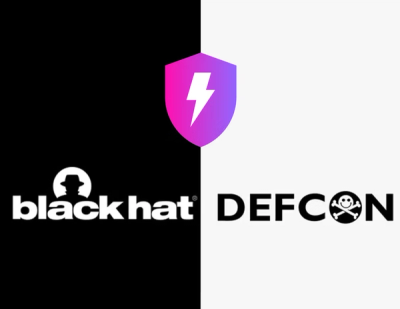
Security News
Meet Socket at Black Hat and DEF CON 2025 in Las Vegas
Meet Socket at Black Hat & DEF CON 2025 for 1:1s, insider security talks at Allegiant Stadium, and a private dinner with top minds in software supply chain security.
@devbookhq/sdk
Advanced tools
SDK for managing Devbook sessions from JavaScript/TypeScript. Devbook SDK requires devbookd running on the server to which it's connecting.
npm install @devbookhq/sdk
or
yarn add @devbookhq/sdk
You start a new session by creating a Session instance and calling the session.open method.
<code-snippet-id> is the ID of the environment from Devbook backend.
When creating the Session you can register handlers for various session events by passing the handlers to the Session constructor.
You can manually close the session by calling session.close. If you need to open the session again after calling session.close you have to create a new Session object and call session.open on it.
import { Session } from '@devbookhq/sdk'
const session = new Session({
id: '<code-snippet-id>',
// Options for connection to a special session with persistent changes
editEnabled: false,
apiKey: undefined,
// Event handlers
codeSnippet: {
onStateChange: state => console.log(state),
onStderr: stderr => console.log(stderr),
onStdout: stdout => console.log(stdout),
},
onDisconnect: () => console.log('disconnect'),
onReconnect: () => console.log('reconnect'),
onClose: () => console.log('close'),
})
await session.open()
// If you don't need the session anymore:
await session.close()
You shall not call any other methods on the
sessionobject before thesession.openfinishes. Before this method successfully finishes you are not connected to the actual session and the fieldssession.codeSnippet,session.terminal,session.filesystem, andsession.processareundefined.
You can run arbitrary code with the runtime predefined in the Devbook env by calling session.codeSnippet.run.
You receive the stderr, stdout, and the information about the code execution from the onStderr, onStdout, and onStateChange handlers that you can pass to the Session constructor inside the codeSnippet object.
There can be only one running code snippet at the same time — you can stop the one that is currently running by calling session.codeSnippet.stop.
await session.codeSnippet.run('echo 2')
await session.codeSnippet.stop()
Following filesystem operations are supported.
listLists content of a directory.
const dirBContent = await session.filesystem.list('/dirA/dirB')
writeWrites content to a new file.
// This will create a new file 'file.txt' inside the dir 'dirB' with the content 'Hello world'.
await session.filesystem.write('/dirA/dirB/file.txt', 'Hello World')
readReads content of a file.
const fileContent = await session.filesystem.read('/dirA/dirB/file.txt')
removeRemoves a file or a directory.
// Remove a file.
await session.filesystem.remove('/dirA/dirB/file.txt')
// Remove a directory and all of its content.
await session.filesystem.remove('/dirA')
makeDirCreates a new directory and all directories along the way if needed.
// Creates a new directory 'dirC' and also 'dirA' and 'dirB' if those directories don't already exist.
await session.filesystem.makeDir('/dirA/dirB/dirC')
watchDirWatches a directory for filesystem events.
const watcher = session.filesystem.watchDir('/dirA/dirB')
watcher.addEventListener(fsevent => {
console.log('Change inside the dirB', fsevent)
})
await watcher.start()
You can start a new terminal in the session by calling session.terminal.createSession.
If you want to connect to the same terminal when you reconnect to a session you can use the
terminalIDoption when creating the terminal. This is currently used for debugging purposes and when you connect to a special persistent session (editEnabledoption when creating a newSession).
If you are using frontend terminal component like Xtermjs you want to pass the data from
onDatahandler to Xtermjs and forward the data from Xtermjs to theterm.sendDatamethod.
If you start any child processes in the terminal you can use the onChildProcessesChange handler and see when they start and exit. You can kill the child processes with session.terminal.killProcess method.
You can manually destroy the terminal by calling term.destroy.
const term = await session.terminal.createSession({
onExit: () => console.log,
onData: (data) => console.log(data),
onChildProcessesChange?: (cps) => console.log(cps),
size: { cols: 10, rows: 20 },
terminalID: '<terminal-id>',
})
await term.destroy()
await term.resize({ cols: 1, rows: 1})
await term.sendData('\n')
console.log(term.terminalID)
await session.terminal.killProcess('<child-process-pid>')
You can start a new process in the session by calling session.process.start. The only required option is the cmd, but you can also define the rootdir and envVars options that the command should be executed with.
If you want to connect to the same process when you reconnect to a session you can use the
processIDoption when starting the process. This is currently primarily used for debugging purposes.
You send the stdin to the process by calling proc.sendStdin.
You can manually kill the process by calling proc.kill.
const proc = await session.process.start({
cmd: 'echo 2',
onStdout: stdout => console.log(stdout),
onStderr: stderr => console.log(stderr),
onExit: () => console.log('exit'),
envVars: { ['ENV']: 'prod' },
rootdir: '/',
processID: '<process-id>',
})
await proc.kill()
await proc.sendStdin('\n')
console.log(proc.processID)
You generate the types for Devbook API from OpenAPI spec by calling:
npm run generate
You build the SDK by calling:
npm run build
FAQs
SDK for managing Devbook sessions from JavaScript/TypeScript
The npm package @devbookhq/sdk receives a total of 54 weekly downloads. As such, @devbookhq/sdk popularity was classified as not popular.
We found that @devbookhq/sdk demonstrated a not healthy version release cadence and project activity because the last version was released a year ago. It has 2 open source maintainers collaborating on the project.
Did you know?

Socket for GitHub automatically highlights issues in each pull request and monitors the health of all your open source dependencies. Discover the contents of your packages and block harmful activity before you install or update your dependencies.

Security News
Meet Socket at Black Hat & DEF CON 2025 for 1:1s, insider security talks at Allegiant Stadium, and a private dinner with top minds in software supply chain security.

Security News
CAI is a new open source AI framework that automates penetration testing tasks like scanning and exploitation up to 3,600× faster than humans.

Security News
Deno 2.4 brings back bundling, improves dependency updates and telemetry, and makes the runtime more practical for real-world JavaScript projects.